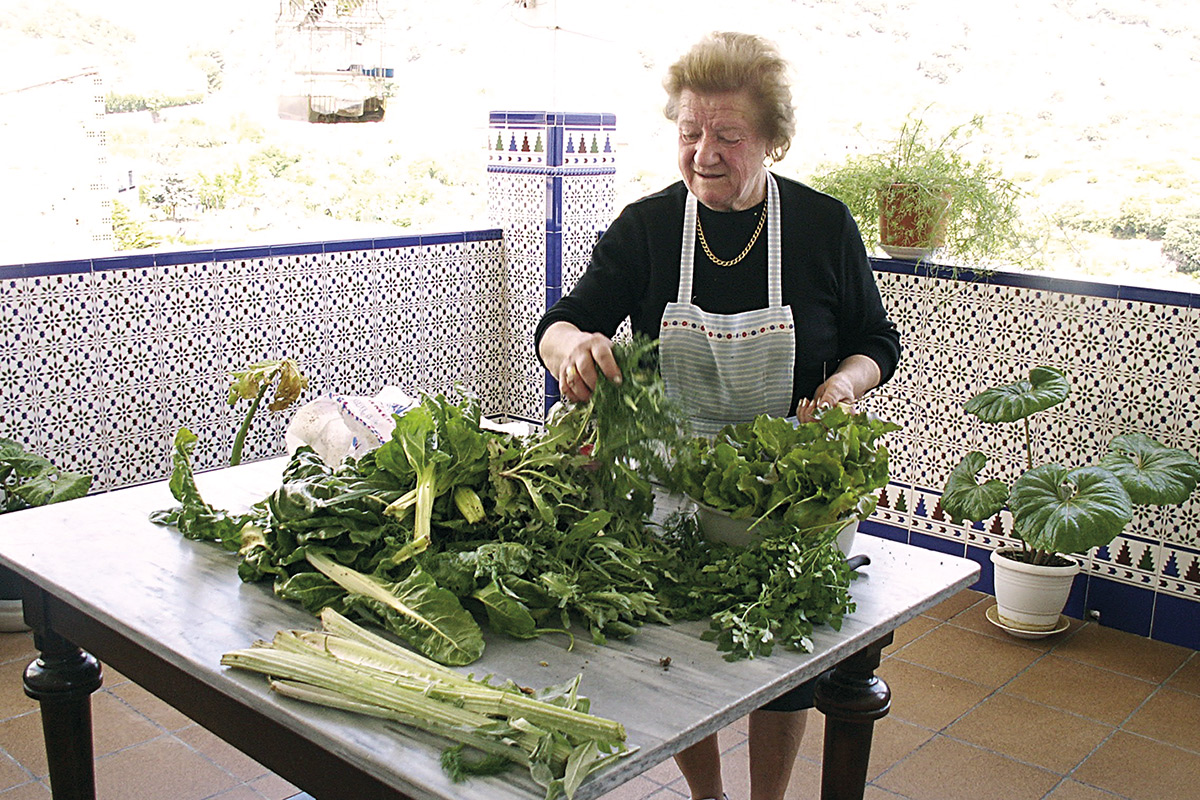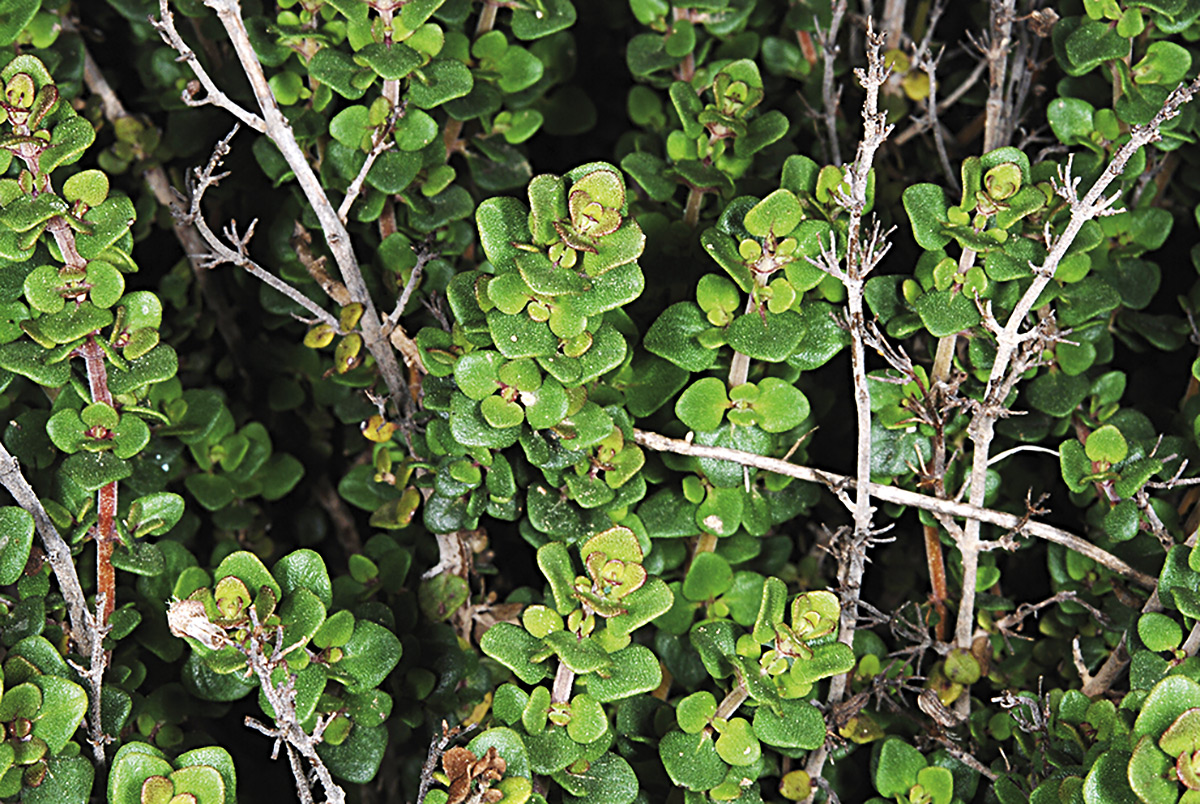
The habit of gathering leaves, flowers, roots, fruits of wild plants and mushrooms for cooking traditional dishes is dying out in parts of Alicante, although in other –mostly rural– areas these traditional recipes are still in use. Ethnobotanical studies conducted in the province of Valencia identify more than 110 wild species used as food.
«To go vegetable gathering» –on the roadside, upland or from vegetable plots, springs, and so on– has been a predominantly rural activity, which has sustained the basic daily diet of many families, especially during hard times (Pellicer, 1999). The selective collection of tender shoots of spontaneous flora –largely regarded today as weeds– fruit, roots and wild mushrooms has conditioned our rich traditional cuisine. In our ancestors’ kitchens they knew how to fill out these humble resources in many stews, salads, pickles, bread rolls, minxos…, adapting recipes to the medium and its possibilities. Over time, this activity has fallen into disuse. Few of the elderly have wanted to hand down this area of popular wisdom, fleeing from famine, escaping from the shame of poverty.
GLOBALISATION AS THE FORCE BEHIND THE CHANGE IN OUR MEDITERRANEAN DIET
The millennial domestication of plants and animals transformed groups of human nomads, whose lifestyle was based on hunting and the gathering of wild resources in major sedentary civilisations. Plant domestication meant, among other things, changes that increased the size and palatability to the detriment of some nutrients. Our current nutrition depends mainly on four major world crops –wheat, rice, corn and potatoes– but wild plant gathering and the continuance of barely domesticated breeds still exist in some rural areas of the planet, and especially in the Mediterranean.
«We select plant foods according to beliefs, traditions, availability and tolerance. Ethnobiological studies can shed light on how these patterns have evolved to date»
One of the cornerstones of the Mediterranean diet is the daily consumption of vegetables, olive oil and wine, while the consumption of meat, fish and nuts is occasional, often obtained by hunting, fishing and gathering. The crucial impact of wild vegetables on a healthy traditional diet should be highlighted, without forgetting the importance of crops, necessary to ensure survival. Generally speaking, wild species tend to be richer in minerals, fibre, essential fatty acids and vitamins, as well as in secondary metabolites, which protect our health, mainly as antioxidants (Pretel et al., 2007; Obon et al., 2009).

On the left, chicory(Cichorium intybus), and on the right, fennel (Foeniculum vulgare), purchased at Elx’s Central Market. / © C. Obón
Nutrition should ensure the proper maintenance of our metabolism, but today several factors, such as increased life expectancy, the rapid daily pace, increased consumption of saturated fatty acids and the decline of plant-based foods, among other things, are increasing intolerance and associated diseases (cardiovascular diseases, colon cancer…). The genetic patterns of human nature have led us to select plant foods according to beliefs, traditions, availability and tolerance. Ethnobiological studies can shed light on how these patterns have evolved to date. In this case, and more specifically in ethnobotany, in addition to allowing us to understand the value of plants in human evolution, both traditional knowledge and associated genetic resources have been handed down. Even so, our agricultural biodiversity is threatened and every year we lose valuable potential resources which can reduce disease risk and strengthen our immune system.

Eruca vesicaria (Rocket). / © D. Rivera
Ethnobotany in Alicante
Several ethnobotanical works on the use of wild resources for food have been carried out in southern Alicante and Valencia. They have provided us with information on many wild edible species –popular names, places, times and methods of collection and preparation– which shows that there is an increased awareness of the flora and related culinary uses.
These studies, analysing Alicante’s wild resources, have identified 113 species –considering only those harvested as vegetables– belonging to 31 botanical families, while those most representative of our wild ethnoflora are Asteraceae (39.55%), brassicas (14.69%), Caryophyllaceae (6.78%) and legumes (6.78%). There are 16 most typically used species in the territory, highlighting those belonging to the Asteraceae family as being the most popular vegetables (Cichorium, Lactuca, Picris, Reichardia, Sonchus and Urospermum). Some, such as Cichorium intybus, are used in salads, sometimes in boiled or fried mixtures –including Silene vulgaris, Beta vulgaris, Papaver rhoeas– or added to omelettes, bread rolls, minxos and pies known as pastissets de brossa o de verdura (Ríos et al., 2009).

Thymus piperella (pebrella). / © D. Rivera
Traditionally Alicante also uses many pickles in brine –with or without vinegar– from wild plants. Of these, pale stonecrop(Sedum sediforme), rock samphire (Crithmum maritimum) and capers or tàpenes and their stems (Capparis sicula) are the most appraised. Especially important is purslane (Portulaca oleracea), widely consumed in salads, with water, salt and vinegar. Some Labiatae (Thymus and Satureja) are used to marinate olives, highlighting the thyme known as pebrella (Thymus piperella), an endemism from the Levante area, widely used as a seasoning in many dishes and as a medicine. Another highly valued spice is the oregano Origanum paui –orenga bona o d’olor or herba botifarrera– of unknown origin, which is only grown in the Levante and Mallorca areas.
But these food sources are not thought of in the same way throughout the region. Conflicting attitudes have been found towards the same vegetable –like fennel or fenoll (Foeniculum vulgare)– so prized in some regions but despised in others.
«Few of the elderly have wanted to hand down this area of popular wisdom, fleeing from famine, escaping from the shame of poverty»
Popular orally-transmitted nomenclature (Climent, 1994-1995) often undergoes changes in each part of the region, with numerous names for a single plant, such as the sow thistle Sonchus tenerrimus which can be known as any of the following: llicsó de pic, pic de pardalet, llicsó de pardalet, llicsó de cameta de pardal, llicsó de perdiueta, llicsó de perdiu, llicsó de perdigot, llicsó de marge, llicsó de paret, llicsó rullet, llicsó fi, llisons. Although there is also the opposite case, whereby one name prevails in all regions, as in the case of purslane or chicory (Cichorium intybus).

One of the participants in the study on wild food used in Alicante cuisine, Sara Calbo, gathering stalks. / © Mª Luz Moreno
Although not considered in this review, equally important is the gathering of marginal and wild fruits –Amelanchier, Diospyros, Ziziphus, Sorbus, Celtis, Mespilus, Crataegus, Arbutus, Chamaerops, Phoenix, etc.– which have been an additional source of vitamins and trace minerals for children –eaten like sweets or used in games– and also for adults. Planted singly or in small groups as part of plots or small vegetable gardens, today they are considered marginal crops, due to their state of neglect, and some are endangered species.
In short, for many, dishes made from these wild resources bring back sad memories, when signature cuisine of the wayside was the norm, in the absence of more palatable foods such as eggs or meat. As in other facets of the tradition, it was no longer passed down to successive generations. This generation gap has led not only to the impoverishment of knowledge, but also of health and dwindling diversity in many rural or suburban areas. In short, wild food sources are threatened by the use of herbicides, abandonment of the countryside, dietary changes and, last but not least, of being forgotten. But, having demonstrated that it is essential for our wellbeing, are we going to let it disappear or welcome it back to our diet?
BIBLIOGRAPHY Climent, D., 1994-1995. «Aproximació a la fitonímia popular del Baix Segura». Quaderns de Migjorn, 2: 127-162. Obón, C., 2006. La importancia de la conservación de las plantas comestibles locales en la Vega Baja (Alicante). Raijos de la Vega. Volcam & Ayuntamiento de Almoradí. Almoradí Obón, C., et al., 2009. «Las plantas comestibles recolectadas en la provincia de Alicante, estudio comparativo entre la Marina Alta y el Bajo Segura». In Guillem-Llobat, X y G. García [eds.] Salut, alimentació i cultura popular al País Valencià. VI Trobades del Seminari d’Estudis sobre la Ciència: “Medicina rural i cultura popular al País Valencià: Homenatge a Joan Pellicer i Bataller”. CEIC Alfons El Vell. Gandía. Pellicer, J. 1999. «Cuina rural silvestre. Recerques etnobotàniques al País Valencià: Contribució a l’estudi de la flora etnobotànica mengívola i culinària del territori Diànic». Quaderns del Palau, 1: 81-123 Pretel, M. T., et al., 2007. «Propiedades nutritivas y funcionales de plantas comestibles silvestres de la provincia de Alicante». Actas de Horticultura, 48: 658-661. Ríos, S., et al., 2009. «Els minxos: l’ús de les verdures silvestres en temps de fam». In Guillem-Llobat, X. & G. García [eds.] Salut, alimentació i cultura popular al País Valencià. VI Trobades del Seminari d’Estudis sobre la Ciència: «Medicina rural i cultura popular al País Valencià: Homenatge a Joan Pellicer i Bataller». CEIC Alfons El Vell. Gandia.





